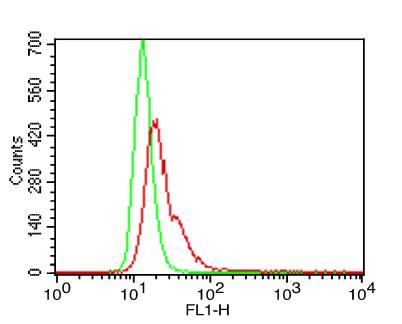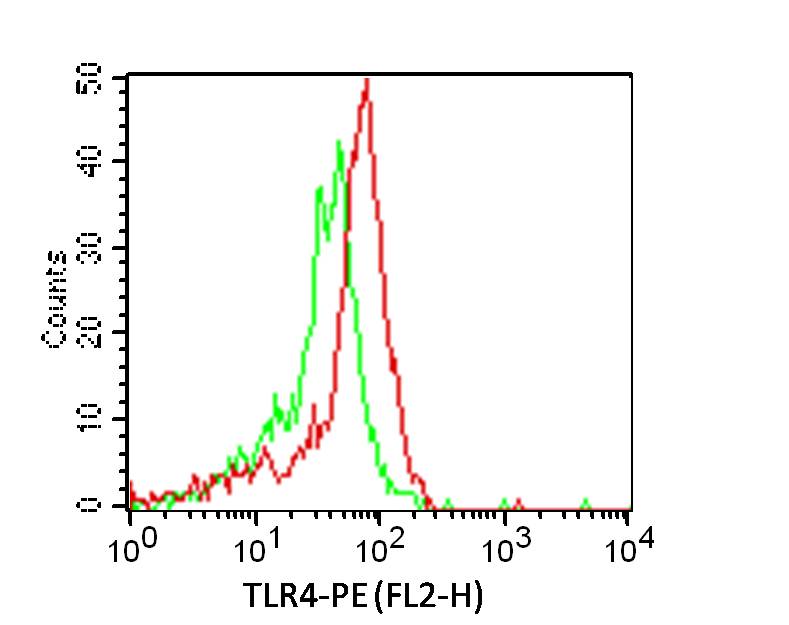Monoclonal Antibody to TLR3 (Clone: ABM15D5)

Fig-1: Intracellular flow analysis of TLR3 in human PBMC (lymphocytes) using 2.0 µg/10^6 cells of TLR3antibody (Clone: ABM15D5). Green represents isotype control; red represents anti-TLR3 antibody. Goat anti-mouse PE conjugate was used as secondary.
Roll over image to zoom in
Shipping Info:
Order now and get it on Wednesday April 23, 2025
Same day delivery FREE on San Diego area orders placed by 1.00 PM
| Format : | Purified |
| Amount : | 100 µg |
| Isotype : | Mouse IgG1 Kappa |
| Purification : | Protein G Chromatography |
| Content : | 25 µg in 50 µl/100 µg in 200 µl PBS containing 0.05% BSA and 0.05% sodium azide. Sodium azide is highly toxic. |
| Storage condition : | Store the antibody at 4°C, stable for 6 months. For long-term storage, store at -20°C. Avoid repeated freeze and thaw cycles. |
TLR3 (Toll-Like Receptor-3) acts as a major receptor in virus-mediated innate immune response. This protein belongs to TLR (Toll-like receptor) family which comprises of 10-12 type I integral membrane receptor paralogs that recognize pathogen associated molecular signatures and initiate inflammatory responses. TLR3 consist of pathogen-binding ECD (Ectodomains) and cytoplasmic signaling domains, known as TIR (Toll IL-1 Receptor) domains, joined by a single transmembrane helix. TLR3 specifically senses dsRNA (Double-stranded RNA), an almost universal viral intermediate generated during most viral replications. TLR-3 activation induces multiple cellular antiviral responses, including production of IFN-alpha/beta and up-regulation of the anti-HIV cellular factor APOBEC3G. These are a family of pattern recognition receptors expressed by immune cells, including macrophages.
FACS analysis: 2.0 µg/10^6 cells
For Research Use Only. Not for use in diagnostic/therapeutics procedures.
| Subcellular location: | Endoplasmic reticulum membrane, Endosome membrane, Early endosome |
| Post transnational modification: | TLR3 signaling requires a proteolytic cleavage mediated by cathepsins CTSB and CTSH, the cleavage occurs between amino acids 252 and 346. The cleaved form of TLR3 is the predominant form found in endosomes. |
| Tissue Specificity: | Expressed at high level in placenta and pancreas. Also detected in CD11c+ immature dendritic cells. Only expressed in dendritic cells and not in other leukocytes, including monocyte precursors. TLR3 is the TLR that is expressed most strongly in the brain, especially in astrocytes, glia, and neurons. |
| BioGrid: | 112953. 32 interactions. |
|
There are currently no product reviews
|





















.png)











